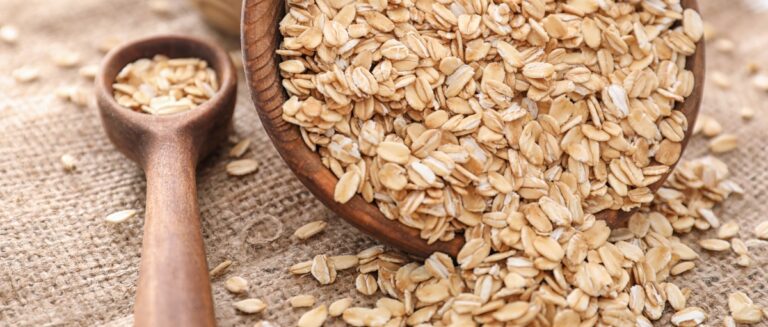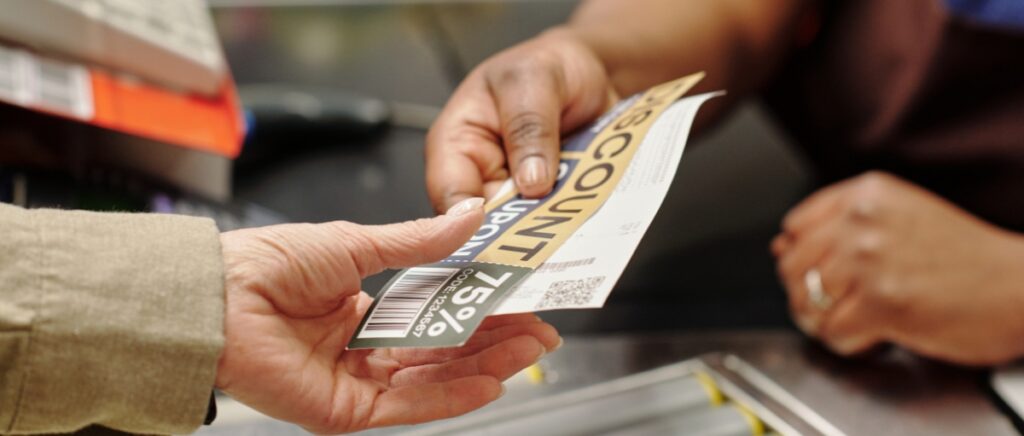With inflation hitting a 40-year high of 9.1% in 2022, nearly every American felt the squeeze on their wallets. But even in these challenging times, coupons are one tried-and-true way to fight back against rising prices. The humble coupon is still one of the most powerful tools in the savvy shopper’s arsenal. In fact, the average household can save $1,465 per year by spending just 20 minutes per week clipping coupons, according to CouponFollow. Knowing how to get coupons can help you save money and find great deals on your favorite products.
Whether you’re a coupon novice or just want to update your savings strategy, we will show you all the best places to find coupons today—both paper and digital. We’ll cover everything from traditional sources like Sunday newspaper inserts to modern tactics like cashback apps and browser extensions. You’ll learn expert tips for stacking coupons with store sales to maximize your savings and avoid pitfalls.
With a little planning and perseverance, you might just find that clipping coupons can be both a fun hobby and a great way to keep more cash in your pocket.
The Four Main Types of Coupons
Before diving into where to find coupons, it’s helpful to understand the four main types you’re likely to encounter. While all coupons offer opportunities to save, they each work a little differently in terms of where they come from and how you use them.
- Manufacturer Coupons: These are issued by the company that makes a product and can be used at any retailer that accepts them. Manufacturer coupons typically offer a discount on a specific item.
- Store Coupons: Individual retailers release these to encourage shopping at their stores. Store coupons can only be used at the issuing retailer but can be stacked with manufacturer coupons for bigger savings.
- Printable Coupons: These digital coupons can be found online and printed at home to be redeemed in-store. Manufacturers or stores may issue printable coupons.
- Digital Coupons: With the rise of smartphone apps, many stores and brands now offer digital coupons that can be added to your store loyalty account and applied automatically at checkout—no physical clipping required.
Now that you know the four main coupon varieties, let’s explore all the different places you can find them—both online and offline.
Where to Get Coupons
Where can I find coupons? While paper coupons may no longer be the only game in town, they’re still abundantly available if you know where to look. Plenty of coupons are literally right at your fingertips every day—the trick is training yourself to spot them. Here are some of the best places to find free coupons:
- Newspaper Inserts: The Sunday paper is still coupon central, so subscribe or grab a copy from your local newsstand, corner store, or coffee shop. Look for the weekly RetailMeNot Everyday. Alternatively, look for “free” community newspapers in your area, which often include coupon inserts as well.
- Store Circulars and Mailers: Ensure you’re on your favorite stores’ mailing lists and watch your mailbox for weekly sales circulars and coupon flyers. Skim these for deal alerts and coupons for items you buy regularly. Some stores’ weekly ads include a section of store coupons anyone can use just by bringing in the circular. Others may feature mega coupon events, like Target’s occasional “Big Book of Savings,” which are worth watching for.
- In-Store Coupon Displays: Stores also make coupons available inside—the key is knowing what to look for. Keep an eye out for blinking coupon dispensers attached to store shelves, often near the featured product, tear-off pads attached directly to products, and products with coupons stuck to the packaging. At checkout, look near the register for special coupon booklets or offers. Some stores print coupons on the back of your receipt, too, so give it a quick scan before tossing it.
- On Products and Packaging: Manufacturers often attach coupons (known as “peelies”) directly to products to incentivize trying a new item or a different size. Carefully examine any boxed, bottled, or bagged products you buy, and you may find a hidden surprise coupon on the box or under the label.
- Coupon Swaps: Couponing can be social! Consider organizing a coupon swap with friends or neighbors. You can trade duplicate coupons or ones you won’t use for ones you will. Look for local couponing groups on Facebook or Meetup and connect with other coupon lovers in your area.
Even in our increasingly digital world, paper coupons are far from obsolete. By looking in these often-overlooked places, you can find plenty of coupons to save money on your weekly shopping.
Finding Digital and Printable Coupons
In the digital age, coupons have gone high-tech. While some savvy seniors may be hesitant to explore digital savings tools, they’re more user-friendly than you might think. Here’s how to sign up for coupons and where to find discounts:
- Brand and Store Websites: Before shopping, remember to check for coupons on your favorite brands’ websites. You can often print them or save them to your smartphone for in-store scanning. Some brands may require signing up for their mailing list to access exclusive savings.
- Coupon Aggregator Sites: Coupon aggregators like Coupons.com and RetailMeNot make it easy to find and compare coupons from multiple brands and stores in one place. Most have both printable and digital coupons you can save to your phone or loyalty card. To avoid wasting time chasing expired or invalid codes, stick to reputable sites and be sure to read the fine print on any coupon before trying to use it.
- Cash Back and Browser Extensions: Apps like Ibotta and Rakuten allow you to earn cash back on purchases, and browser extensions like Honey and Capital One Shopping can help you find and apply coupon codes when shopping online.
- Store Apps and Loyalty Programs: Stores like Walgreens, CVS, Kroger, Safeway, and Target offer apps with digital coupons. You can virtually “clip” coupons to add to your loyalty card, and the discounts will be applied automatically at checkout. Joining free loyalty programs gives access to exclusive digital coupons and personalized deals.
Maximizing Your Savings
To really supercharge your savings, combine multiple couponing strategies. Here are some pro tips to maximize your coupon mileage:
- Stack Coupons: Many stores allow you to combine a manufacturer coupon with a store coupon for the same item. This is known as “stacking” and can add up to deep discounts, sometimes even free products!
- Pair with Sales: Watch stores’ weekly ads and match any coupons you have to items that are already on sale. Using a $1 coupon on a product that’s 20% off is a bigger win than using it when the item is full price.
- Read the Fine Print: Ensure you understand any coupons’ limitations, like expiration dates or size/quantity requirements. Some stores also limit how many identical coupons you can use in one transaction.
- Plan Ahead: Coupons incentivize us to buy items we might not need at the moment. To avoid wasteful spending, keep a list of upcoming needs and stock up when you spot a great coupon deal. Building a modest stockpile can tide you over until the next sale.
- Be Flexible: While coupons can encourage brand loyalty, staying open to trying new products can unlock even more savings. Compare post-coupon prices across brands and be willing to switch if the deal is right.
Remember, couponing doesn’t have to be all or nothing. Even if you don’t have hours to dedicate to it, spending just a few minutes a week, clipping can still make a real impact on your bottom line.
Paper or Digital Coupons: Which Is Right for You?
So, with all these digital savings tools, are paper coupons still worth the hassle? The truth is both have their place, and the right mix comes down to your personal preferences and habits. Here’s a quick breakdown of the pros and cons:
Paper Coupons
Paper coupons offer a traditional approach to saving money, perfect for those who enjoy hands-on management. In 2023, 43% of coupon users reported that they favored using paper coupons.
- Pros: Paper coupons are easy to organize and provide a tangible way to manage savings. They can be clipped, stored in binders, and even traded or shared with other couponers. Many people enjoy the hands-on process of gathering and organizing them.
- Cons: However, paper coupons can easily be damaged, lost, or expire without notice. Clipping and organizing takes time, and keeping track of multiple coupons can be difficult. Additionally, they are often limited in number, which means you may not always have them when needed.
Digital Coupons
Digital coupons cater to modern convenience, making savings accessible right from your phone. In 2023, digital coupons accounted for 16% of coupons issued.
- Pros: Digital coupons are always accessible on your phone and are easy to search, compare, and use. They reduce the need for physical organization and are often available for instant download via apps or websites. Additionally, they help avoid the risk of damage or loss associated with paper coupons.
- Cons: Despite their convenience, not all stores accept digital coupons, limiting their use in some locations. Digital coupons may also require some tech skills, as users need to navigate apps and websites, create accounts, and sometimes deal with connectivity issues or in-app glitches.
Ultimately, the best approach for most people is using a combination of both paper and digital coupons to cover all your bases. The goal is to fit couponing into your life sustainably, not make it a full-time job. Choose the methods that work for your lifestyle.
Couponing Your Way to Savings Success
We’ve covered a lot of ground in this guide, and you’re now equipped with a full toolkit on how to get coupons and apply them strategically. Couponing can seem intimidating at first, but like any skill, it gets easier with practice. Start small by choosing just one or two of the techniques covered here and gradually incorporate more as you get comfortable.
Over 90% of households claimed they had used at least one coupon within the last year.
With a little patience and persistence, using coupons will become second nature, and savings will really start to increase. Even better, you may find that the thrill of scoring a good deal adds a whole new dimension of fun to mundane shopping trips.
So what are you waiting for? Grab your scissors (or your smartphone) and start couponing your way to more financial freedom. Your wallet will thank you!
Sources
Bureau of Labor Statistics. (2022). Consumer prices were up 9.1 percent over the year ended June 2022, the largest increase in 40 years. Retrieved from https://www.bls.gov/opub/ted/2022/consumer-prices-up-9-1-percent-over-the-year-ended-june-2022-largest-increase-in-40-years.htm
CouponFollow. (2022). Coupon data study. Retrieved from https://couponfollow.com/research/coupon-data-study
Statista. (2023). Digital and paper coupon usage in the U.S.. Retrieved from https://www.statista.com/statistics/1388819/digital-paper-coupons-usage-us/
Capital One Shopping. (2023). Coupon statistics. Retrieved from https://capitaloneshopping.com/research/coupon-statistics/
CouponFollow. (2023). Coupon statistics. Retrieved from https://couponfollow.com/research/coupon-statistics











